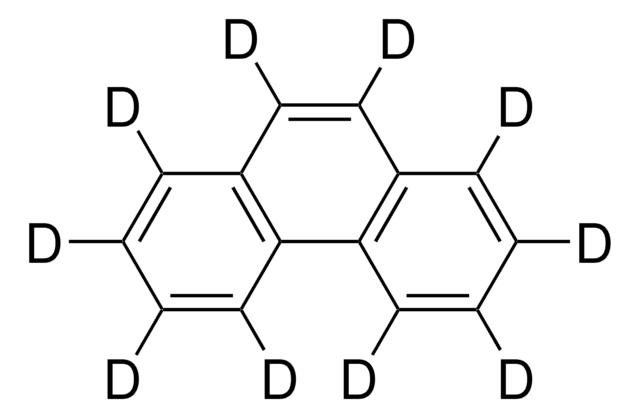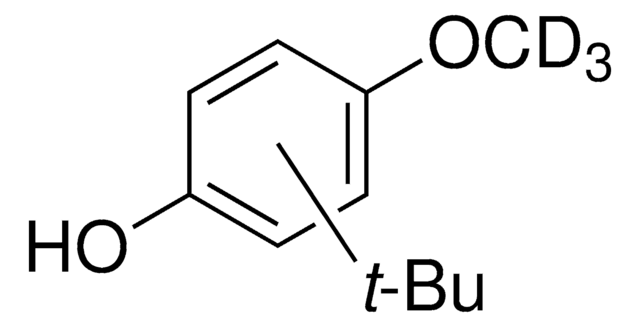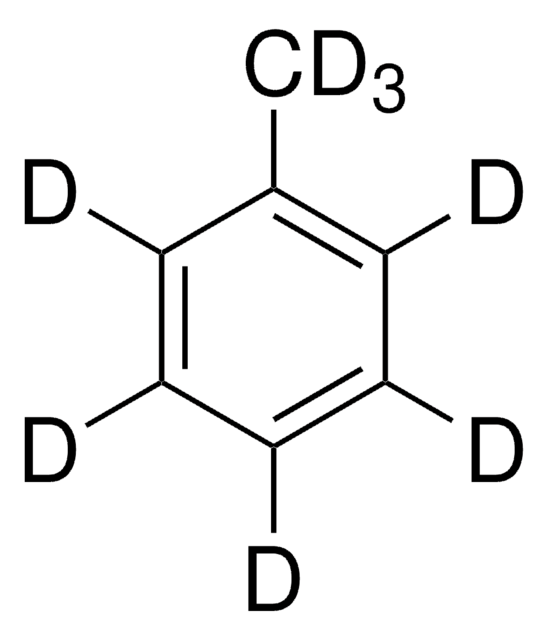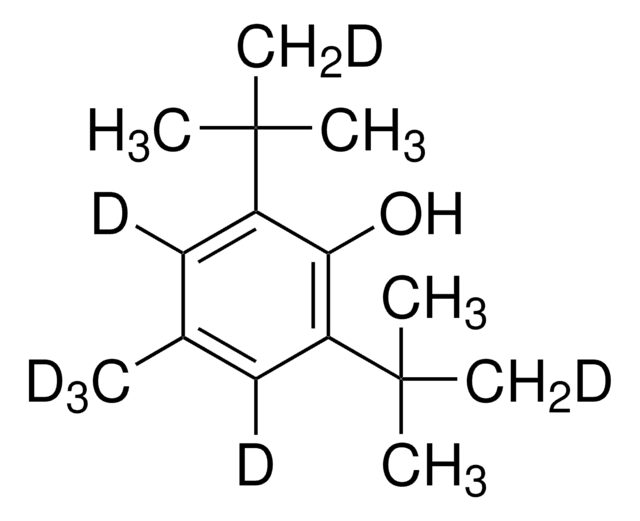452505
2,6-Di(tert-butyl-d9)-4-methyl(phenol-3,5,O-d3)
≥98 atom % D, ≥98% (CP)
Synonyme(s) :
BHT-d21
About This Item
Produits recommandés
Pureté isotopique
≥98 atom % D
Essai
≥98% (CP)
Forme
solid
pb
265 °C (lit.)
Pf
69-71 °C (lit.)
Changement de masse
M+21
Chaîne SMILES
[2H]Oc1c(c([2H])c(C)c([2H])c1C(C([2H])([2H])[2H])(C([2H])([2H])[2H])C([2H])([2H])[2H])C(C([2H])([2H])[2H])(C([2H])([2H])[2H])C([2H])([2H])[2H]
InChI
1S/C15H24O/c1-10-8-11(14(2,3)4)13(16)12(9-10)15(5,6)7/h8-9,16H,1-7H3/i2D3,3D3,4D3,5D3,6D3,7D3,8D,9D/hD
Clé InChI
NLZUEZXRPGMBCV-YLENQQAOSA-N
Conditionnement
Mention d'avertissement
Warning
Mentions de danger
Conseils de prudence
Classification des risques
Aquatic Acute 1 - Aquatic Chronic 1
Code de la classe de stockage
11 - Combustible Solids
Classe de danger pour l'eau (WGK)
WGK 2
Point d'éclair (°F)
260.6 °F - closed cup
Point d'éclair (°C)
127.00 °C - closed cup
Faites votre choix parmi les versions les plus récentes :
Déjà en possession de ce produit ?
Retrouvez la documentation relative aux produits que vous avez récemment achetés dans la Bibliothèque de documents.
Notre équipe de scientifiques dispose d'une expérience dans tous les secteurs de la recherche, notamment en sciences de la vie, science des matériaux, synthèse chimique, chromatographie, analyse et dans de nombreux autres domaines..
Contacter notre Service technique





